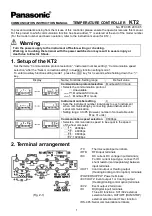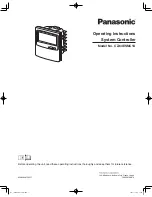
Overview of Features
BCM5718 Programmer’s Guide
Broadcom
®
January 29, 2016 • 5718-PG108-R
Page 52
Overview of Features
The BCM5718 family of controllers represents the third generation of Broadcom NetXtreme multi-port Gigabit
Ethernet controllers. This family is the successor to the BCM5714/BCM5715 family. The BCM5717, BCM5718,
and BCM5720 feature two independent 1 Gb Ethernet ports on the network side. A host computer can
communicate with the controller over a single PCIe link. However, the two network controller ports appear as
two independent PCIe functions to the host operating system (four functions in the quad-port BCM5719). In
essence, the chip consists of a single PCIe interface controller that offers multiple function-level interfaces, and
each function-level interface is further attached to an independent DMA engine which in turn feeds an
independent Ethernet Media Access Controller (EMAC).
Attached to the other end of each EMAC is the respective 802.3 Ethernet physical media interface. The
controller essentially consists of multiple DMA+EMAC logic instances, multiple Ethernet physical interfaces, and
a single instance of a PCIe core that is shared by the DMA blocks.
The BCM5718 is available as four SKUs, BCM5717, BCM5718, BCM5719 and BCM5720. These are also
referred to as the Dual-Copper SKU and the Dual-Media SKU. For the BCM5718, BCM5719, and BCM5720
part, any of the network ports may be independently configured as a copper-based (1000BASE-T) or as SerDes-
based (1000BASE-X/SGMII) media interfaces. The choice of media interface on each port is configurable via a
power-on strapping option.
The BCM5717 part is permanently bonded as a copper (1000BASE-T) only device.
For the Dual-Media SKU (BCM5718 and BCM5719), whenever a port is configured as a SerDes medium, there
are two protocol choices: 1000BASE-X or SGMII. This choice can be made by an Auto-Detect feature or by
explicit software programming.
The software driver for this device is capable of loading or unloading each network port independently. The
DMA+EMAC associated with each port is also able to acquire different ACPI power states irrespective of the
other; however, the power state of the PCIe link may not necessarily follow that of either one or both ports. This
is a significant behavioral difference of a dual-port controllers compared to single-port. The BCM5718 family
hardware and firmware is cognizant of this effect and adds the necessary intelligence to handle it. This
functionality remains transparent to device driver software.
On top of the basic dual-port network controller functionality, the BCM5718, BCM5719, and BCM5720 also
support an advanced feature known as IO Virtualization (IOV).
Network Controller Sideband Interface (NC-SI) pass-through functionality is the Server Management solution
offered by the BCM5718 family of controllers. NC-SI pass-through is a part of the Server Management
infrastructure. Such technology offers server platform management via a BMC (baseboard management
controller) chip. A server platform and, in turn, a BMC is typically administered remotely over the network, but
BMCs are not equipped with direct network connectivity. Here, a network controller chip comes into the picture—
a pass-through-capable NIC chip offers a sideband packet interface to the BMC. Over this interface the BMC
can send and receive Ethernet packets to and from the network. In essence, the network adapter functionality
of the network controller chip is shared by the host computer system and the BMC chip. NC-SI pass-through
protocol is an industry standard (DMTF) for a side band interface between the BMC and network controller. The
physical and L2 layers of NC-SI are upwardly compliant to the respective sections of the IEEE 802.3
specification, thus allowing the exchange of Ethernet packets between the network port and BMC without any
protocol transformation whatsoever.
















































